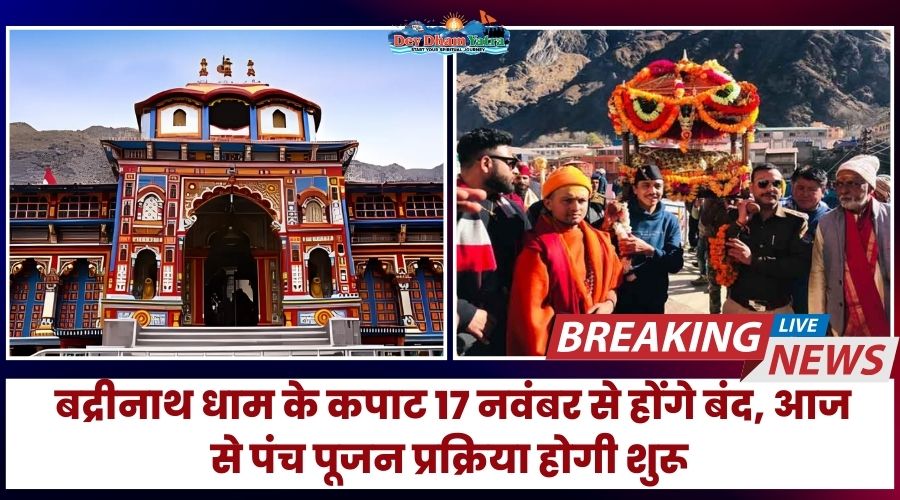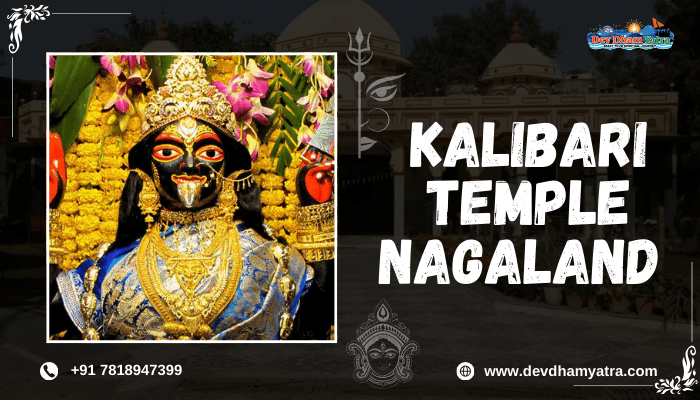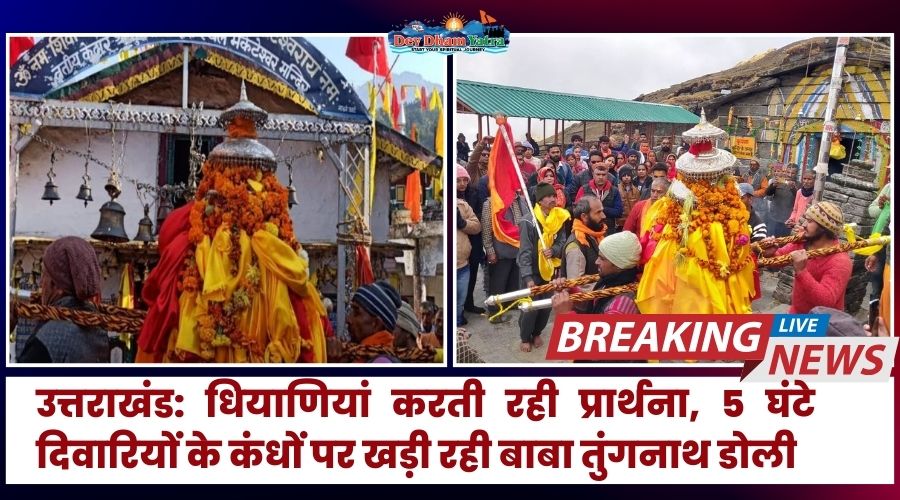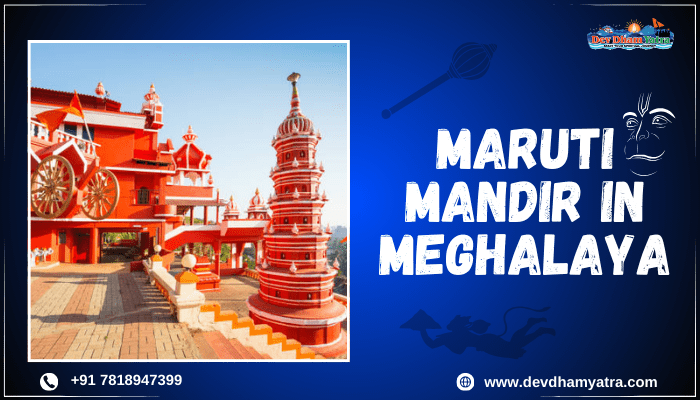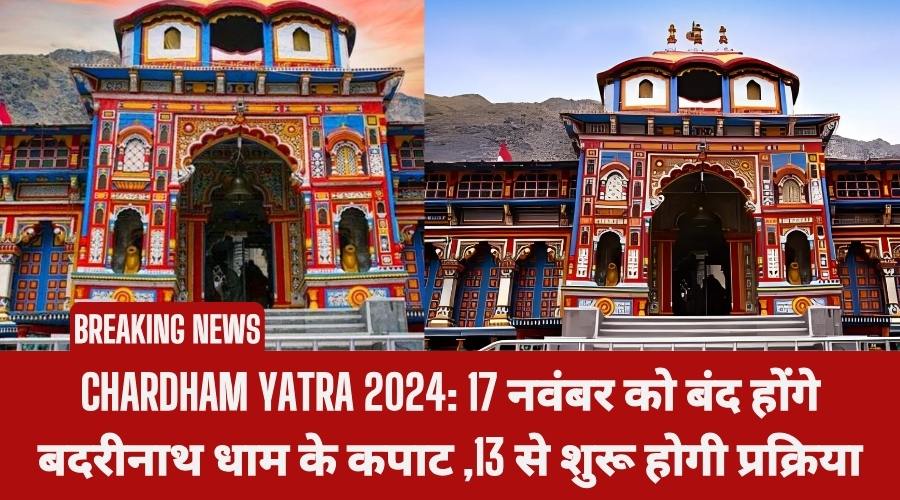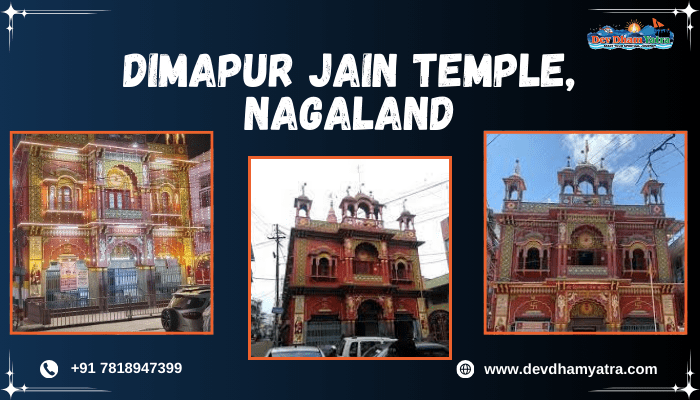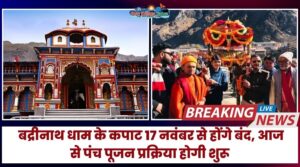If you are interested in exploring the Jain heritage of Delhi, you should not miss visiting Sri Digambar Jain Lal Mandir, one of the oldest and most prominent Jain temples in the city. Located opposite the Red Fort, on the main Chandni Chowk road, this temple is a testament to the faith and devotion of the Jain community in Delhi.
The sanctuary is committed to Ruler Parshvanath, the 23rd Tirthankara of Jainism, who is venerated for his peacefulness, sympathy, and discretion lessons. The sanctuary houses his venerated image made of dark marble, alongside symbols of other Tirthankaras, like Master Adinath, the main Tirthankara, and Ruler Mahavira, the last and most renowned Tirthankara. The sanctuary likewise has a hallowed place for Master Mahavira, where his impressions are revered in marble.
The history of the temple dates back to the 17th century when it was built by a Jain merchant named Agar Chand during the reign of the Mughal emperor Shah Jahan. The temple was originally known as Firozabad Mandir, as Delhi was then called Firozabad. The temple was later renovated and expanded by several Jain patrons over the centuries, and acquired its current name of Lal Mandir, meaning Red Temple, due to its red sandstone facade.
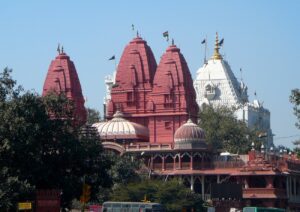
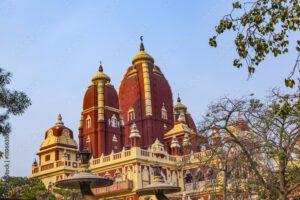
The temple is famous for its exquisite architecture, intricate carvings, and rich decorations. The temple’s main entrance has a high archway with a golden inscription of the Jain mantra “Om Namo Arihantanam”, which means “I bow to the enlightened ones”. The temple complex consists of three levels, with the main sanctum on the ground floor, a library and a museum on the first floor, and a hospital for birds on the second floor. The bird hospital is a unique feature of the temple. It was established in 1956 by Acharya Deshbhushan Maharaj, a Jain monk who was concerned about the welfare of birds in the city. The hospital treats injured and sick birds of all kinds, free of charge. It also has an aviary where birds can recover and fly freely.
The library, museum, and school are located in the basement of the temple. The library has a collection of ancient Jain manuscripts and books. The museum displays relics and artifacts related to Jain’s history and culture. The school provides education to underprivileged children in the vicinity.
Sri Digambar Jain Lal Mandir is not only a place of worship but also a place of learning and service. It is a symbol of the Jain values of ahimsa (non-violence), anekantavada (pluralism), and aparigraha (non-attachment). It is open to all visitors who wish to experience the beauty and tranquility of this sacred site.
Information: Sri Digambar Jain Lal Mandir
Location:
Sri Digambar Jain Lal Mandir is located in the heart of Old Delhi, opposite the Red Fort.
- Entry: Entry is free for all visitors
- Timings: The temple is open daily from 5:30 a.m. to 11:30 a.m. and from 6:00 p.m. to 9:30 p.m.
- Aarti: Morning arti from 5:30 a.m. to 6:00 a.m. and evening art from 7:00 p.m. to 7:30 pm
- Photography: Photography is not allowed inside the temple premises.
- Additional Information: Shoes and leather items must be deposited at the shoe counter before entering the temple.
How to Reach Sri Digambar Jain Lal Mandir in Delhi ?
By Metro –
- Take a metro train to Chandni Chowk station on the Yellow Line of the Delhi Metro.
- Exit the station from Gate No. 5 and walk towards the main road.
- Turn left and cross the road using the pedestrian bridge or the traffic signal.
- Walk along the road for about 300 meters until you see the red temple on your right.
- Enter the temple complex through the main gate and follow the signs to the main shrine.
By Bus –
- From New Delhi Railway Station, take bus number 419 or 429 to Red Fort.
- From Old Delhi Railway Station, take bus number 405 or 414 to Red Fort.
- From Kashmere Gate ISBT, take bus number 405, 414, 419, or 429 to Red Fort.
- From Connaught Place, take bus number 522 or 543 to Red Fort.
- Once you reach the Red Fort bus stop, you can walk for about 5 minutes to the temple
By Car –
- Start from Connaught Place and head towards Rajiv Chowk.
- Take the exit for Chandni Chowk and follow the signs for Red Fort.
- Turn left at Netaji Subhash Marg and drive for about 1.5 km.
- The temple will be on your left, opposite the Red Fort.
By Train –
- If you are coming from any city towards Delhi, only get down at Old Delhi station. One can walk to the temple from Old Delhi station as the temple is only 300 meters away from the station.
- Route from Station to Temple: Exit the main entrance of the station, and turn towards Humayun’s Tomb.
- After passing Humayun’s Tomb, the first turn (Sixteen Seventeen Ka Mohalla) is for Partisan Mosque, turn left at this turn.
- At the turn, the first temple is Shri Digambar Jain Lal Mandir
History of Sri Digambar Jain Lal Mandir:
The Jain temple in Delhi, also known as Lashkara Mandir, has a long and fascinating history. It dates back to the time of Mughal Emperor Shah Jehan, who ruled from 1628 to 1658 and founded the city of modern Delhi. He built a walled city with the Red Fort as his residence and Chandni Chowk as the main street.
Shah Jehan was impressed by the business skills of the Jains and invited them to settle in his city and contribute to its prosperity. He gave them some land near Dariba Gali, south of Chandni Chowk, where they could erect a temporary structure for their temple. The Jains brought three marble idols from the collection of Sh. Jivaraj Papriwal, a Jain scholar who had purified many idols from different places. The main idol in the temple is Lord Parshvanath, the 23rd Tirthankara or spiritual teacher of Jainism.
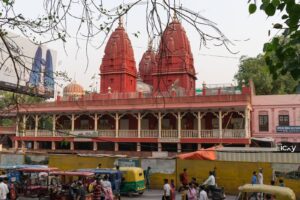
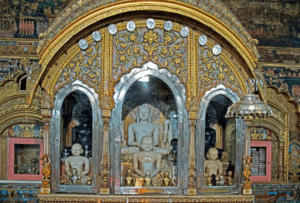
The temple was initially located in a tent in a military colony, as it belonged to a Jain officer of the Mughal army. This is why it is called Lashkara Mandir, which means “the temple of the tent”. Over time, the temple was renovated and expanded by various Jain patrons and became a prominent place of worship for the community. The temple is still standing today and attracts many visitors who admire its architecture and history.
Architecture of Sri Digambar Jain Lal Mandir
The temple has a majestic entrance with a Mahastambha, and a pillar with shrines of Lord Mahavira and other Tirthankaras. The temple is a two-story building with three chambers on each floor.
The first floor has the main hall where the idol of Lord Mahavira is placed on a marble pedestal. The entrance is surrounded by a courtyard with pillars that have carvings and paintings depicting the life and teachings of Lord Mahavira.
The second floor has two chambers with idols of Lord Adinath, the first Tirthankara, and Lord Parasnath, the 23rd Tirthankara.


The third chamber has a balcony that overlooks the busy street of Chandni Chowk. The balcony is decorated with streamers and flags and is cleaned and painted annually.
Nearby Hotels
Suppose you are looking for nearby hotels that offer comfortable accommodations and easy access to the temple. Here are probably the best hotels close to Sri Digambar Jain Lal Mandir:
- The Lalit New Delhi: This is a 5-star hotel that is only 0.4 km away from the temple. It offers spacious rooms, a spa, a pool, a gym, and several dining options.
- Haveli Dharampura: This is another 5-star hotel that is 0.2 km away from the temple. It features elegant rooms, a rooftop restaurant, a cultural center, and a courtyard.
- Hotel Arina Inn: This is a 3-star hotel that is 0.4 km away from the temple. It offers comfortable rooms, free Wi-Fi, free parking, and a 24-hour front desk. It is also close to other attractions like Red Fort and Chandni Chowk.
- ibis New Delhi Aerocity Hotel: This is a 3-star hotel that is 16 km away from the temple. It offers modern rooms, a restaurant, a bar, a fitness center, and an airport shuttle service. It is also near the Indira Gandhi International Airport and the Aerocity metro station.
Nearby Places
If you are looking for places to visit near this temple, you have many options to choose from. Delhi is a city rich in history and culture, and you can explore some of its most famous monuments and attractions. Here are a portion of the spots you can visit:
- Red Fort: This majestic fort was the residence of the Mughal emperors for nearly 200 years. It was built by Shah Jahan in 1638 AD, and it showcases the splendid architecture and art of the Mughal era. You can admire the beautiful gardens, halls, mosques, and museums inside the fort, and witness the sound and light show in the evening.
- Humayun’s Tomb: This is one of the finest examples of Mughal architecture and a UNESCO World Heritage Site. It was built by Humayun’s wife Haji Begum in 1565 AD, and it is the first garden tomb in India. You can see the intricate designs and carvings on the tomb, and enjoy the serene atmosphere of the surrounding gardens.
- Chhattarpur Temple: This is an ancient temple dedicated to Goddess Katyayani, one of the forms of Goddess Durga. It was built by Baba Sant Nagpal Ji in 1974, and it is one of the largest temple complexes in India. You can see the different shrines and statues of various deities, and experience the spiritual vibes of this place.
- Lotus Temple: This unique temple does not belong to any specific religion or sect. It is shaped like a lotus flower, and it is a symbol of peace and harmony. It was built by the Bahá’í community in 1986 and welcomes people of all faiths and backgrounds. You can meditate or pray in the main hall, or visit the library and information center.
- National Rail Museum: This is a fun place to visit if you are interested in trains and railways. It was established in 1977, and it displays a collection of old and new locomotives, coaches, wagons, models, and memorabilia related to Indian railways. You can also ride on a toy train or a steam engine train, and learn more about the history and development of rail transport in India.
FAQs
Q: Where is Sri Digambar Jain Lal Mandir located?
A: Sri Digambar Jain Lal Mandir is located opposite the Red Fort on the main Chandni Chowk road.
Q: When is Sri Digambar Jain Lal Mandir open?
A: The temple is open daily from 5:00 AM to 1:00 PM and from 4:00 PM to 11:00 PM.
Q: When was the temple built?
A: The temple is a historical monument that dates back to 1656 AD. It has undergone many changes over the centuries, especially after India became a free nation in 1947. The current form of the temple reflects its rich and diverse heritage.
Q: Why is this temple called Lal Mandir?
A: Shri Digambar Jain Mandir is also known as Lal Mandir because it is made up of red sandstone.
Q: What are the main attractions of Sri Digambar Jain Lal Mandir?
A: Sri Digambar Jain Lal Mandir has a beautiful red sandstone facade with intricate carvings and sculptures. The main shrine houses the idol of Parshvanatha, along with other Tirthankaras and deities. The temple also has a museum, a library, a hospital, and a bird sanctuary.





